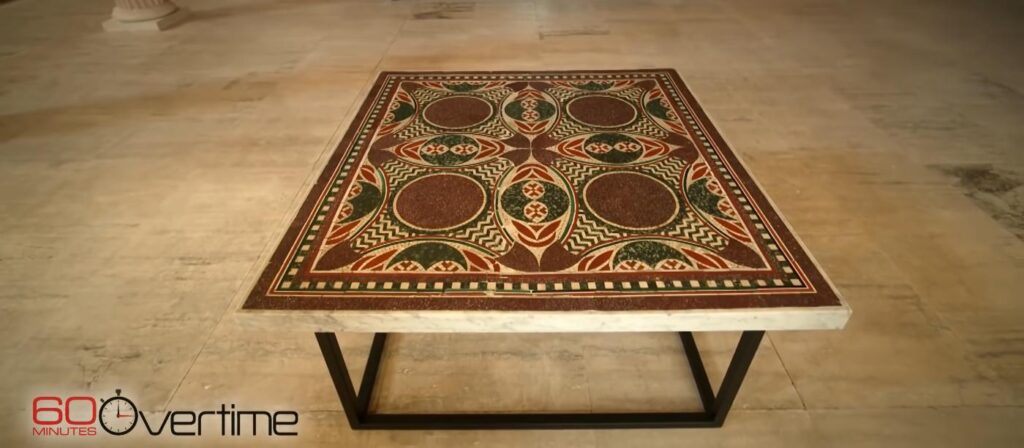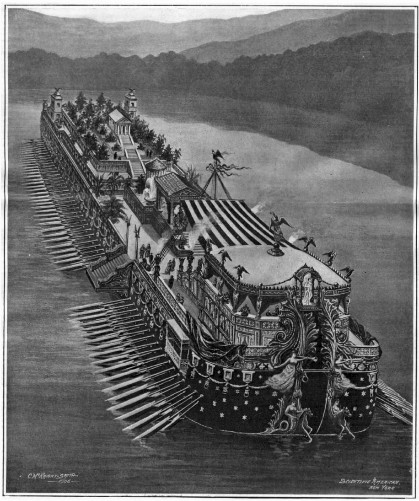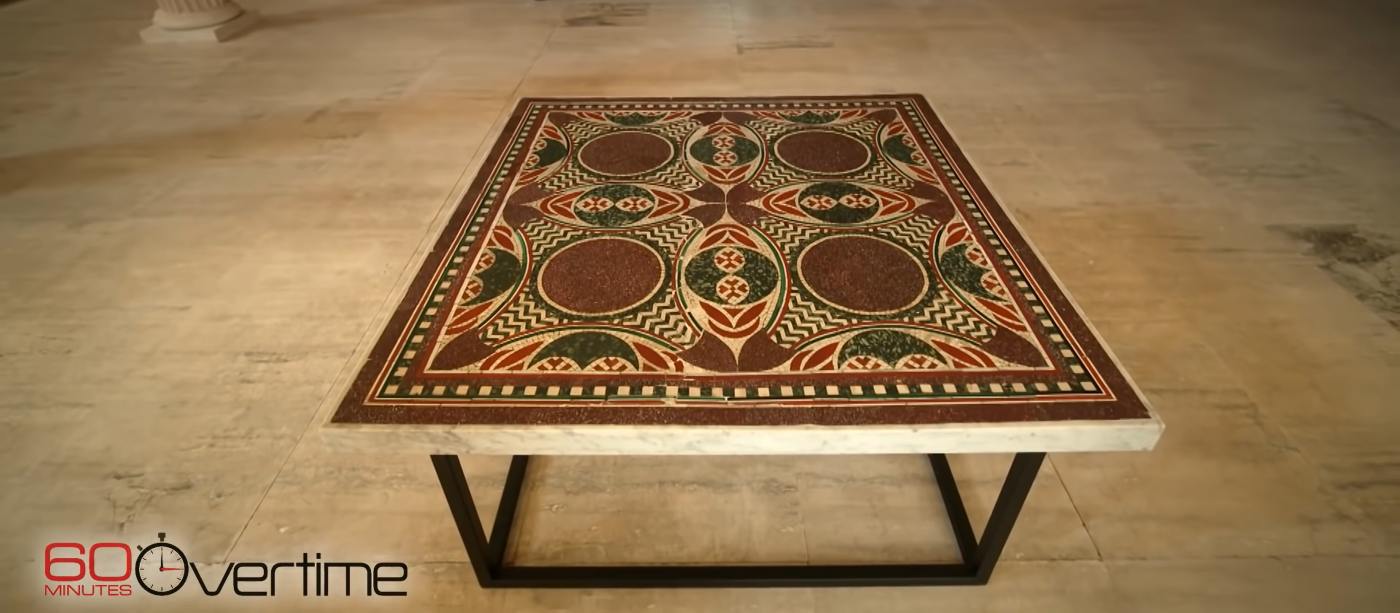
Built in the Roman Empire, buried for two millennia under a lake, uncovered by a dictator, then stolen by the Nazis, recovered—only to be sold as a coffee table in a Park Avenue apartment, the whirlwind life of a Caligula-era mosaic has finally reached its appropriate conclusion, with the stunning piece going on display in an Italian museum.
Decorated in forest green, brick red porphyry, and creamy white, the mosaic decorated Emperor Caligula’s famous “pleasure barges,” which were two enormous Iron-Age yachts that were excavated from the depths of Lake Nemi near Rome after Benito Mussolini drained the lake in 1920.
In 2013 Dario Del Buffalo, an Italian expert in Roman stone art, was signing copies of his recent book Porphyry in a New York jewelry store when, according to an interview with 60 Minutes Overtime, he heard the most astonish conversation in front of him.
“There was a lady, with a young guy with a strange hat, that came to the table and told her ‘What a beautiful book, and oh! Helen look, that’s your mosaic!'” recounts Del Buffalo. “And she said, ‘Yes that’s my mosaic,’ so I finished my last signature and I went after them.”
“I saw the young guy and I said, ‘Excuse me you were talking about the mosaic on my book, can you tell me is this the mosaic you were talking about?'” said Del Buffalo. “‘Yes this is the mosaic Helen has in her house on Park Avenue!'”
The surprised author described it as a one-in-a-million chance, and as much as he felt sorry to do so, he had to report it to the Italian consulate authorities, sure as Del Buffalo was that Helen’s mosaic belonged originally to Caligula, who put it on his giant boats.
Piazze and Nazis

These boats were essentially massive floating piazze, commissioned in the year 40CE as a testament to the greatness of Caligula, and the mosaic is believed to have been used as a dance floor on the boats which were so big they never sailed.
The mosaic was thought to have originally been housed along with the barges’ remains in the Museum of the Roman Boats, completed in the 1930s, but that was converted into a bomb shelter during WWII, and which tragically suffered a fire that destroyed the pleasure barges.
However the mosaic has no fire damage of any kind, which had Manhattan prosecutors wondering if it had been spirited away before the fire, perhaps by the notorious art “collectors” of the Third Reich.
MORE: English Teenager Discovers Hoard of 3,300 Year-Old Axes and Becomes Metal Detecting Celebrity
Helen Fioratti, the mosaic’s former-owner, was never charged with the crime of possession of the artifact which was considered to have been stolen, and she has never filed a claim to it, believing it would be too long and expensive even though she feels she could win it back.
Fioratti, an American art dealer who had lived in Italy for a period with her Italian journalist husband, claims she bought it from an aristocratic Italian police official with a well-established reputation for recovering lost art stolen by the Nazis.

“It was an innocent purchase,” Fioratti told the AP. “We were very happy with it. We loved it. We had it for years and years, and people always complimented us on it.”
RELATED: Amateurs Claim to be ‘On the Verge’ of Uncovering Long Lost Treasure Horde Worth Over $20 Billion
The mosaic, which just went on exhibition, has now returned at long last to the museum from which it was so fortuitously stolen, avoiding the fire which destroyed so many of its sister artifacts, after finding itself a pair or perhaps trio of very loving owners in the proceeding 70 years.
(WATCH the video for this story below; Editor’s Note: Viewers outside the U.S. can watch the CBS video here.)
RETURN Fascinating Stories Like This to Their Rightful Place; With Friends…




















